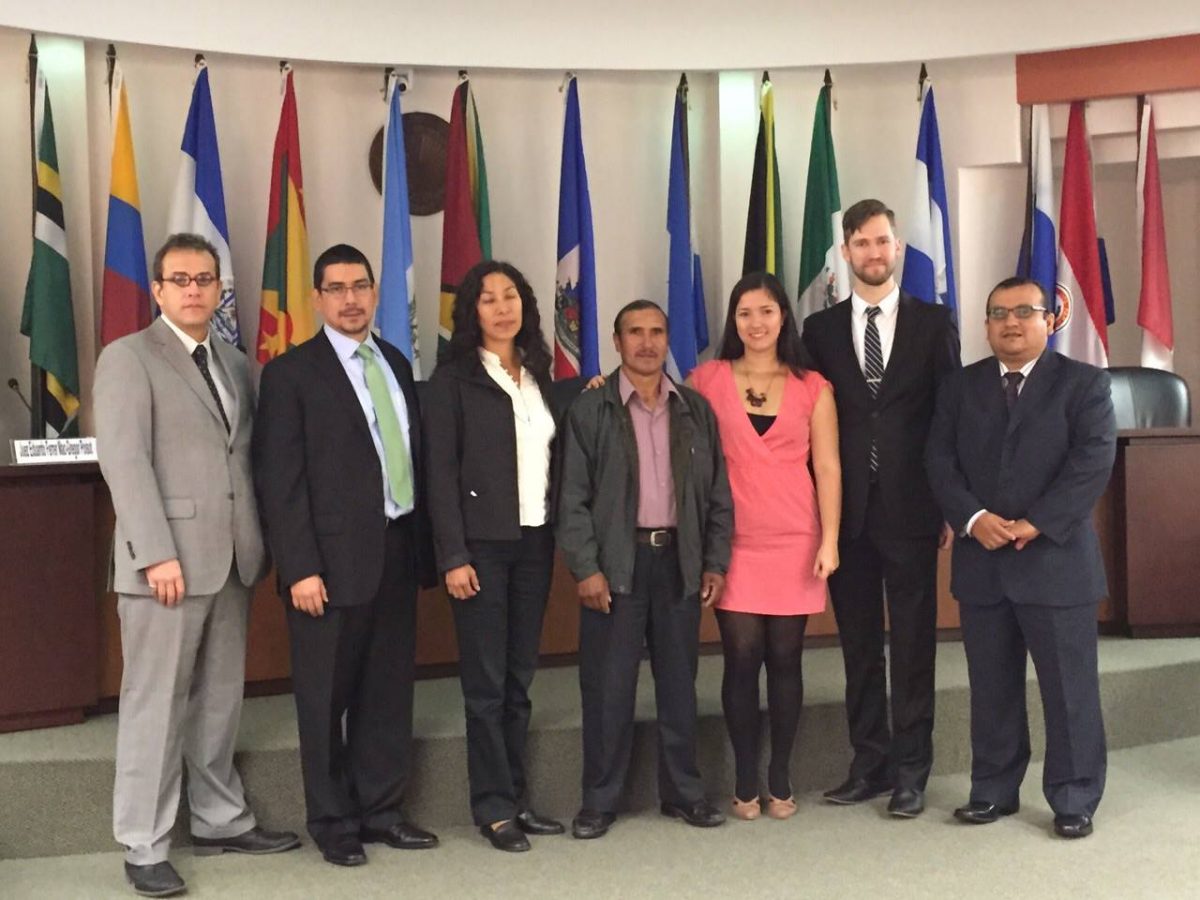






San Jose, January 27th 2015.– Human Rights groups denounced today serious violations committed against the rural community of Santa Barbara by the Peruvian military during the internal armed conflict in Peru.
The Center for Justice and International Law (CEJIL) and Asociación Paz y Esperanza stood before a public hearing at the Inter-American Court of Human Rights (I/A Court) in defense of members the quechua speaking, Andean community.
On July 4th 1991, members of the Peruvian army advanced a military operation that ravaged two sectors of the community. During the course of the operation, the military arrested 15 members of the community, most of them women and children, who were suspected of belonging to subversive groups. Members of the group were beaten, their houses were burned to the ground, and their cattle as well as other belongings were stolen by soldiers. Afterwards, the victims were led towards the Varallon mine (nicknamed the Mysterious mine by the community) where they were executed with bursts of high-caliber automatic rifles. Finally the military used dynamite to disappear the remains.
“The moral damage of taking my family away from me is something that you’ll never cure. The wound that I have inside my heart will never heal,” said Zenon Cirilo Onzayo Tunque, husband and father of 4 of the victims, “I would like to have their remain, to know where are my children buried, at least to light them a candle or take them a flower.”
The case of the rural community of Santa Barbara is yet another example demonstrating a pattern of impunity and a generalized and systematic practice conducted by the Peruvian Army of carrying out forced disappearances, extra judicial executions, massacres and other human rights violations during the internal armed conflict in Peru. Thus far, investigations and prosecutions by the State for these crimes have been minimal.
In the present case, a large group of military personnel planned and executed the operation, but until now only one active sentence of 20 years issued in 2012 by the National Criminal Court of Peru against Sargent Oscar Alberto Carrera Gonzalez exists. This same sentence ordered the processing of five other military personnel and the investigation of 3 high ranking officers. Two of them, Dennis Wilfredo Pacheco Zambrano and Javier Bendezú Vargas, are currently fugitives from justice. Both of them have active arrest warrants through INTERPOL. However the Peruvian authorities have not taken the necessary steps to effectuate their arrests, and the rest of the military personnel involved have not been adequately investigated.
These were some of the points raised during the hearing. CEJIL concluded pointing out the lack of access to justice, truth, and reparation for the victims, the lack of timely prosecution of the fugitive military personnel, and the climate of inefficacy present in the Peruvian State that left this case on the backburner for over 20 years, even after the events of the massacre were partially recognized by the State.
”It’s unacceptable that Peru continues to avoid its obligations concerning the complete fulfillment of rulings issued over cases of severe human rights violations that occurred during the internal armed conflict,” expressed Francisco Quintana, Director of the Andean Region and North American Program for CEJIL, ”The fugitives who were involved in the massacre of Santa Barbara must be captured and judged so that the State can fully clarify the events and finally fulfill its duty of reparations for the victims. The echoes of what happened in the Varallon mine have been reverberating for 23 years. The time for justice is now. ”
The organizations requested the Peruvian State to guarantee the right to the truth and the integrity to the family of the victims and the provision of structural repairs, the establishment of a mechanism that will facilitate the identification of the remains and finally the provision of integrated answers that take in account the necessities of the community.
Meanwhile the Peruvian State refuted the classification of the case as one of forced disappearance instead of extra judicial execution, pointed to lack of funds as one of the causes delaying further investigation processes and the identification of one of the victims as such.
Additional Information
The peasant community of Santa Barbara is nestled in the Andean mountains that trace the south central area of the country of the department of Huancavelica.The majority of the residents dedicated to cattle herding and agriculture.